German flight director Tom Uhlig from the Columbus Control Centre update on last week’s Airway Monitoring experiment. The original blog entry in German is available here.
ESA astronaut Samantha Cristoforetti’s Futura mission to the Internataional Space Station in 2014-2015 was linked to the “five-volume trilogy” The Hitchhiker’s Guide to the Galaxy. For me, Tim Peake’s mission – the only British astronaut in the European Astronaut Corps – could be linked to the British comedy troupe Monty Python. My cool religious education teacher at high school scored points by showing their film Life of Brian before Easter to the students.
Hence the title of this blog entry, a tribute to the former BBC comedy show Monty Python’s Flying Circus.
The content for this blog entry is obvious – I associate circuses with complicated, international, highly-entertaining (at least for us in the control room), world-class events that require preparation and rehearsal, on the border of what is possible, and also not without risk… Last week we performed the Airway Monitoring experiment which included all of these elements.
Tim himself wrote about the scientific content of the experiment and this ESA page reports on the first run with Samantha in 2015.
It is certainly the most complex European experiment ever performed on the International Space Station. For one thing the experiment is not run in our “home” the European Columbus module, but in the US airlock so everything must be coordinated with our American colleagues. In addition it is not done under “normal air pressure”, but we reduce air pressure in the airlock. This means that we reduce a vital parameter for astronaut’s survival – oxygen – which is why the whole Medical Ops community has a say. Security experts on both sides of the Atlantic are involved and European hardware is operated in the American section of the Space Station.
You can appreciate that the red tape, which is ubiquitous in spaceflight, increased for this experiment. Together with NASA we worked for months on the procedures with step-by-step instructions for the crew and the experiment as well as creating documents detailing exactly the required flight rule changes, medical conditions, acoustic limits, formal exceptions from other flight rules, the rules for using voice channels and so on and so on…
The individual activities on the timeline had to be mentioned in a timetable in correct sequence but we also had to create timelines for all eventualities. A flow chart with dependencies was created; the only way to make sure that if any deviation from the plan occurred we could adapt in real-time without overlooking any other important conditions.
We had to formally check with our American partners where each device can be plugged into the US Airlock and where that equipment could be installed without breaching security-protocols or jeopardizing air circulation in the module. For this experiment we could not rely on our own video equipment, but had to resort to live images from the Americans.
Together with Damec, the European centre of expertise assigned to the experiment, we developed “What if?” scenarios. Under what circumstances would we abort the experiment? What medical parameters must be monitored?
After everything had been resolved in numerous teleconferences, meetings, emails and telephone calls, we involved the astronauts in the final preparations.
First of all they had move to their workspace in the Quest Airlock and move the spacesuits that are usually stored there to Columbus. For safety reasons emergency equipment had to be brought into the airlock. Finally, the astronaut researcher-guinea pigs were cut off from the International Space Station. Lithium hydroxide canisters were installed to absorb exhaled carbon dioxide and then the lung-function testing system was installed. The astronauts were on a special diet for the experiment and the Crew Medical Officer was on hand and briefed in case his colleagues in the airlock lost radio connection or needed other assistance whereby a premature end of the experiment might be necessary.
The two Tims (Peake and Kopra), had a private medical consultation with their flight surgeons before the experiment started (and afterwards), and then the actual trial could take place: the astronauts breathed defined air mixtures under reduced pressure to analyse the exhaled air…
The great effort was rewarded with excellent measurement results, which the scientists in Europe will now process.
Immediately after the Airway Monitoring session, preparations were made for the next scientific experiments in Tim’s mission. Experiments follow in quick succession in many scientific disciplines – to put it in Monty Python terms: “And now for something completely different”.

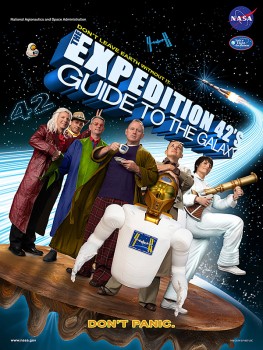
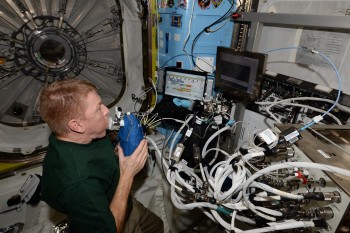
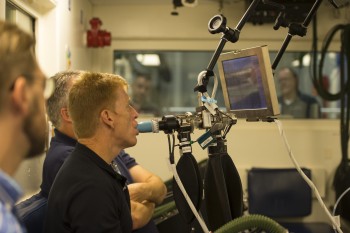
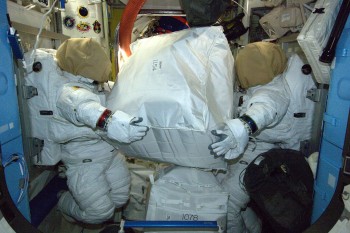
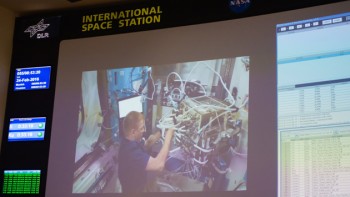
Discussion: 3 comments
why are you wasting all of our tax money that we work hard for?
Interesting use for an airlock! I hope the work is useful to monitor astronaut health one day as we explore further out in space (I wonder if a lightweight CT or MRI scanner might be a longer term goal and if artificial gravity could eliminate dust problems in transit to they planets). I also read that it could lead to an effective test to diagnose asthma. Good luck!
The trouble with Outreach programmes is because they are populist by definition, they need to be easy to absorb in the smallest likely attention span of the masses. Being an Astronaut is the equivalent of being an elite athlete with a couple of PhDs.
Id like to see a little less clowning around and fingerpainted spaceships in favour of more serious aspects of what these guys do. Good article.